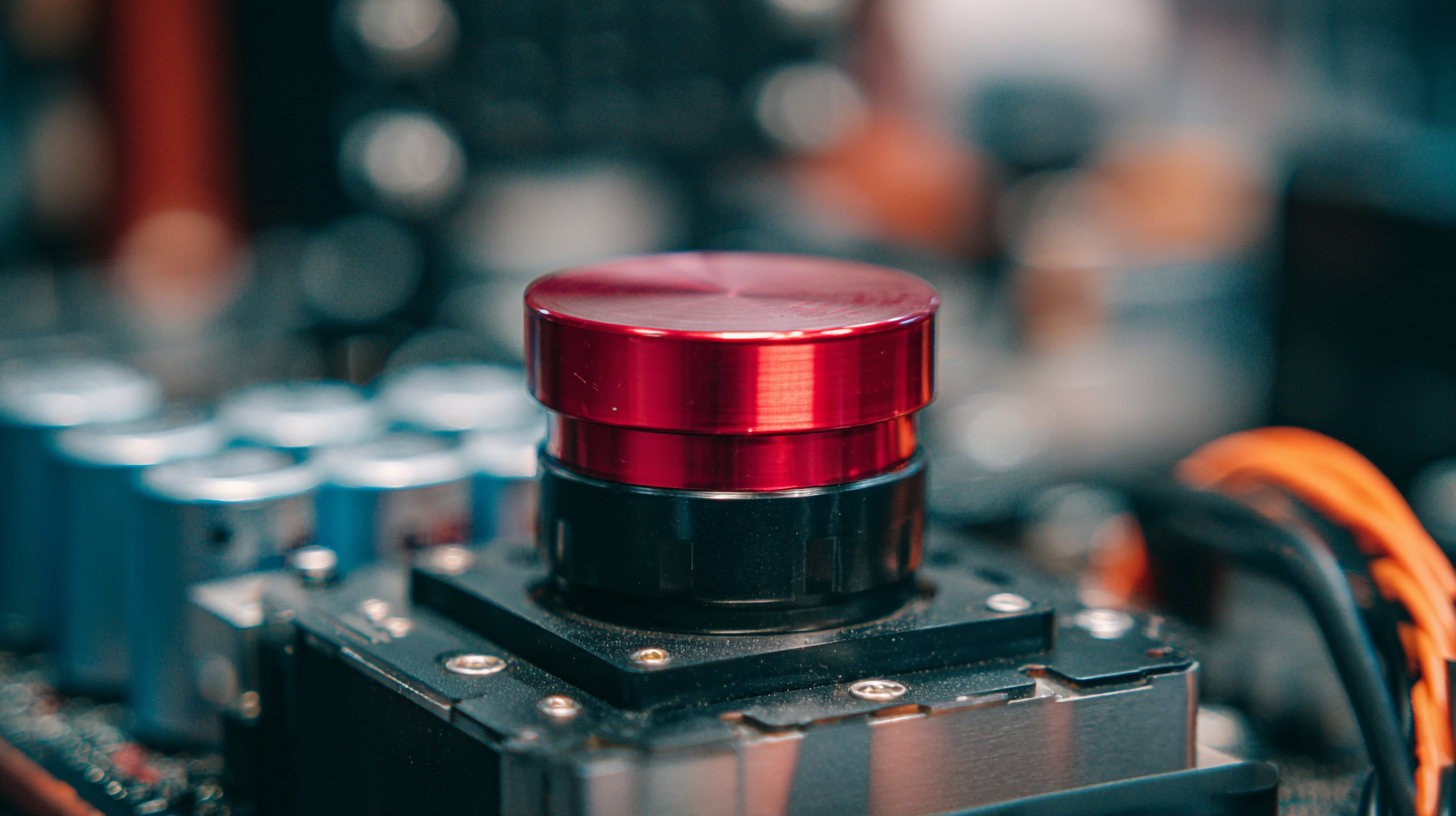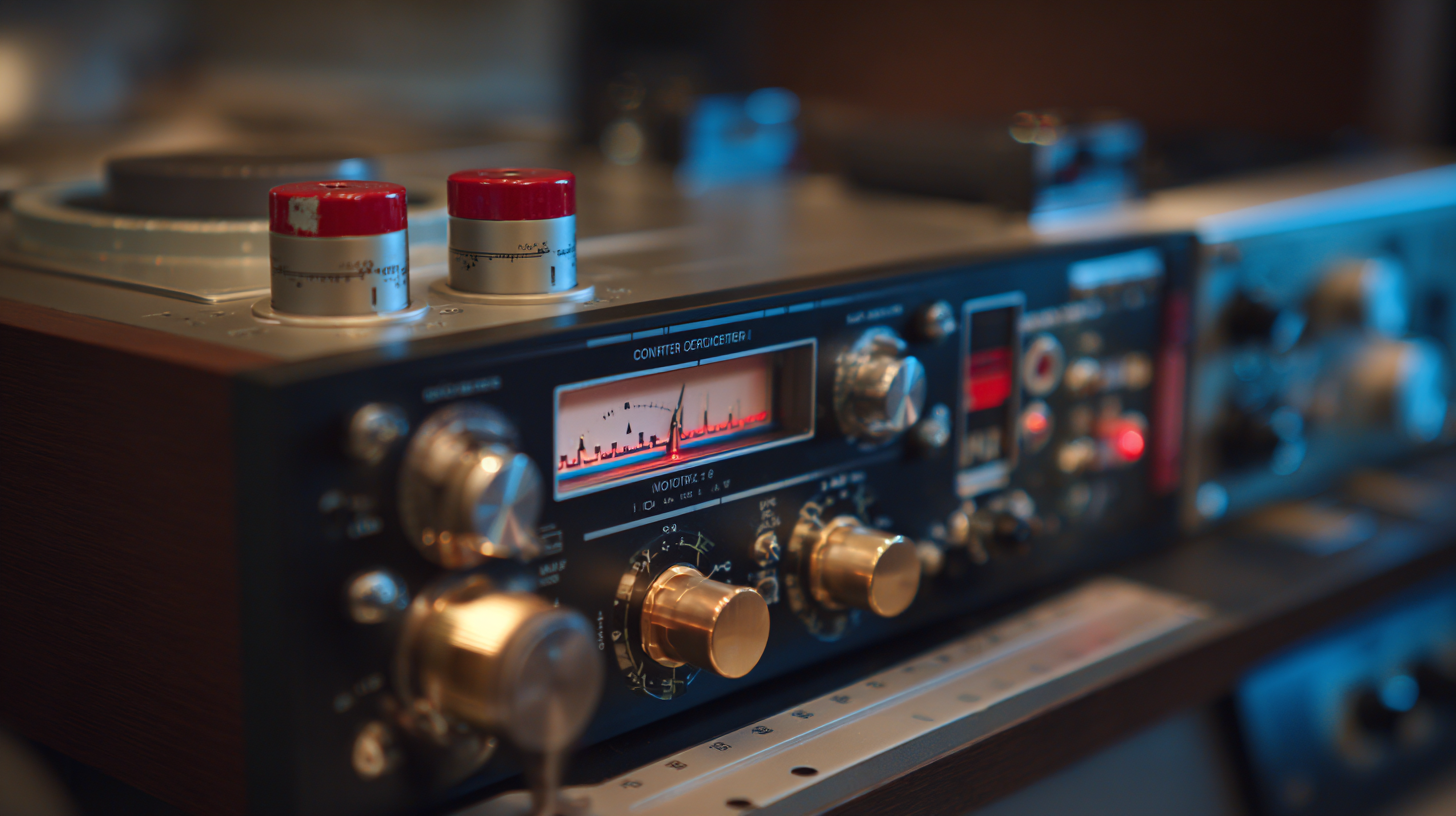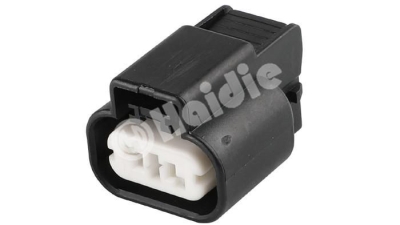The Definitive Guide to Mastering Connector Cans: Everything You Need to Know
Table of Contents
- Understanding Connector Cans: Types and Functions Explained
- The Benefits of Using Connector Cans in Modern Applications
- How to Choose the Right Connector Can for Your Project
- Step-by-Step Guide: Installing and Maintaining Connector Cans
- Common Mistakes to Avoid When Working with Connector Cans
- Innovations in Connector Can Technology: What’s Next?
- The Essential Guide to Choosing the Right 2 Pole Female Canter Light Truck Connector for Mitsubishi PK505-02027
- FAQS
- Conclusion
- Related Posts
In the fast-changing world of automotive tech, getting a handle on Connector Cans has really become a must for industry pros and companies. I recently came across a market report that says the worldwide wire harness market is probably gonna hit around $70 billion by 2027. That just shows how much folks are looking for reliable, efficient connections in vehicles these days.
 Yueqing Haidie Electric Co., Ltd. is majorly leading the charge in this area, focusing on wire harness solutions that help auto parts come together smoothly and work flawlessly. We’re really proud of the quality of our wire harnesses, and that dedication has earned us a good reputation. In fact, it’s even inspired some smaller brands that look up to us, reflecting our focus on innovation and top-notch quality. As we dive into the key strategies for Connector Cans, our goal is to give you the info you need to really shine in this essential part of automotive engineering.
Yueqing Haidie Electric Co., Ltd. is majorly leading the charge in this area, focusing on wire harness solutions that help auto parts come together smoothly and work flawlessly. We’re really proud of the quality of our wire harnesses, and that dedication has earned us a good reputation. In fact, it’s even inspired some smaller brands that look up to us, reflecting our focus on innovation and top-notch quality. As we dive into the key strategies for Connector Cans, our goal is to give you the info you need to really shine in this essential part of automotive engineering.
Understanding Connector Cans: Types and Functions Explained
Connector cans might sound like tech jargon, but honestly, they're pretty much the unsung heroes in tons of different applications. Basically, they help connect various systems and keep everything running smoothly. You'll find different types of these cans out there, each suited for specific needs across industries like electronics, automotive, and telecom. If you’re into the numbers, a report from MarketsandMarkets says the global connector market is expected to jump from about $67.6 billion in 2021 to over $80 billion by 2026. That just goes to show how much connector tech is becoming a big deal in today’s gadgets and devices.
One of the most common kinds you’ll see are the metal connector cans. They’re super tough, protecting the connections from environmental shenanigans like dirt, water, or even vibration—perfect for tough environments like factories or military gear. On the flip side, plastic connector cans are gaining popularity because they’re lightweight and cheaper to make. In fact, a study from Grand View Research points out that plastics are likely to dominate the market, mainly because they’re so versatile and great for reducing weight and costs—especially useful for consumer electronics and cars.
But it’s not just about holding things together. Connector cans actually play a big role in making sure signals get transmitted properly and don’t get messed up by interference. The materials and design choices really matter if you want top performance. For example, new shielding techniques have made a huge difference in electromagnetic compatibility, which is a fancy way of saying they’re better at handling high-speed data — crucial for modern networking needs. With more and more devices needing to do multiple things at once, understanding the different types and roles of connector cans is pretty much essential when you're picking out components for any project.
The Definitive Guide to Mastering Connector Cans: Everything You Need to Know
| Connector Can Type | Function | Common Applications | Material | Size |
|---|---|---|---|---|
| Circular Connector Can | Electrical signal transmission | Audio equipment, Automotive | Plastic/Metal | 10mm - 30mm |
| Rectangular Connector Can | Power and data transfer | Computers, Industrial automation | Metal | 20mm - 50mm |
| USB Connector Can | Data transfer and charging | Smartphones, Laptops | Plastic | 5mm - 15mm |
| Optical Connector Can | Fiber optic signal transmission | Telecommunications, Networking | Glass/Plastic | 2mm - 10mm |
The Benefits of Using Connector Cans in Modern Applications
Connector cans have really become an essential part of modern designs these days. They pack quite a punch when it comes to boosting functionality and making things more efficient. One of the biggest perks? They help create solid, reliable electrical connections while still keeping everything neat and compact. That’s especially a big deal in industries like telecom or automotive, where space is tight but performance just can't be compromised. Using connector cans, manufacturers can cut down on connection mishaps, boost their durability against tough environmental conditions, and even make assembly a whole lot smoother.
And let’s not forget, they also do a great job at maintaining signal quality and reducing electromagnetic interference—or EMI, if you wanna get technical. This is super important when you’re dealing with sensitive data or high-frequency signals, where noise can cause all sorts of issues. The way they shield connections really helps these systems perform better in today’s digital world. Plus, their modular design makes scaling up or upgrading systems pretty straightforward, giving engineers more flexibility to adapt as needs evolve. In short, connector cans are pretty much a must-have for anyone serious about modern design and engineering—can't really go wrong with them.
How to Choose the Right Connector Can for Your Project
When you're trying to pick out the right connector for your project, the first thing you really want to do is figure out what your specific needs are. Think about where you'll be using it—like, is it outdoors or in a tricky, vibration-heavy spot? Also, consider what materials you're working with and what electrical specs are must-haves. For example, if your setup’s in a bumpy environment, you'll need a connector that can handle all that movement without losing its grip. Oh, and don’t forget about the size and shape too — these details can really make a difference when it comes to installing stuff smoothly and making sure everything works well down the line.
Another thing to keep in mind is that there are different types of connectors out there. From sealed to unsealed options, and even ones made for specific industries—each one has its perks. Sealed connectors, for instance, are great if you’re dealing with moisture or dust because they keep everything protected. Those are perfect for outdoor projects. But if your situation isn’t so demanding, something simpler might do the trick and be easier to work with when you're putting things together or fixing stuff later. So, take some time to weigh the advantages and drawbacks of each type — that way, you’ll make a smart choice that suits your goals and keeps things reliable over time.
Connector CAN Types Usage in Various Projects
This chart demonstrates the percentage usage of different types of connector cans in various projects. Understanding which connector type is favored can help in selecting the right connector can for your project.
Step-by-Step Guide: Installing and Maintaining Connector Cans
Getting the hang of installing and maintaining connector cans is actually pretty important if you want your internet to stay reliable these days. I read somewhere that almost 70% of folks run into connectivity hiccups at some point — and often it’s because the hardware wasn’t set up quite right. So, knowing the basics of how to install connector cans step-by-step isn’t just useful, it can really boost your network’s performance and keep things running smoothly.
When you’re putting in connector cans, it’s a good idea to stick to the guidelines—trust me, skipping even small steps can lead to issues. Make sure all your connections are tight and grounded properly. Interestingly, a survey by a top tech company found that over half of connectivity glitches (about 55%) happen because the installation wasn’t quite right. Also, don’t forget about maintenance—cleaning out the cans and checking for any wear and tear can save you from future headaches. Regularly checking your gear can improve your network’s reliability and even cut downtime by around 40%, according to some reports. So, learning these tricks isn’t just about fixing things; it’s about making sure your connection stays solid on the daily.

Common Mistakes to Avoid When Working with Connector Cans
When you're working with connector cans, it’s really important to avoid the usual mistakes—trust me, it makes all the difference if you want things to go smoothly. One of the biggest missteps is not properly preparing the connection points. Think of it like a faulty security certificate that pops up with a “Your Connection Is Not Private” warning; if your connections aren’t clear or secure, problems are bound to come up later on. So, always double-check that both ends are clean and tightly secured—that little extra effort can save you a ton of headaches and stop frustrating interruptions in your work.
And here’s another thing — a lot of folks tend to skip testing after they’ve set up their connector cans. But honestly, it's super important to verify everything's working right before you move forward. It’s kind of like chatting with someone—you want to make sure you’re both on the same page, right? If not, misunderstandings can happen, which might cause delays or even project failures. So, take a moment to test everything—trust me, it’s worth it. When you do that, your setup will be way more reliable and your overall workflow smoother and more efficient.
Innovations in Connector Can Technology: What’s Next?
You know, the latest innovations in connector can technology are really shaking up how packaging and consumer convenience are evolving. It’s kind of crazy to think that the global market for beverage cans is expected to hit around $30 billion by 2025 — and these connector can designs are a big part of that. I read in a report from the Can Manufacturers Institute that folks are really looking for eco-friendly and user-friendly packaging options these days. Things like connector cans, which keep drinks fresh and make opening and resealing super easy, are totally ready to jump on this trend.

Some of the coolest updates include using lighter materials that not only make the cans more durable but also cut down on environmental impact. Plus, there's a lot of buzz around new bonding techniques and smart tech, like sensors to track freshness or tamper-proof seals — you know, the kind that just make the whole experience better. A recent study by Smithers Pira showed that about 73% of consumers are more likely to pick products with packaging that’s innovative and actually makes their lives easier. So, as manufacturers keep pushing the envelope with design and tech, it’s pretty clear that connector cans are going to be a big part of how beverage packaging looks and works in the future.
The Essential Guide to Choosing the Right 2 Pole Female Canter Light Truck Connector for Mitsubishi PK505-02027
When selecting the appropriate 2 Pole Female Canter Light Truck Connector, particularly for models like the Mitsubishi PK505-02027, understanding the product specifications is crucial. The PK505-02027 connector, integral to the HD023C-2.2-21 series, stands out with its robust design tailored for heavy-duty applications. According to industry reports, connectors in this category are subjected to stringent durability tests, ensuring they function optimally even in challenging environments. This has led to a significant increase in demand, with the market for automotive connectors projected to grow at a CAGR of 6% from 2020 to 2027.
Moreover, compatibility is essential. The 2.2 series, to which the PK505-02027 belongs, has been specifically designed to meet the complex wiring requirements of modern light trucks. With advancements in automotive technology, including the push for electric and hybrid vehicles, connectors that can handle higher voltages and currents are becoming essential. Research indicates that connectors that maintain reliable performance under varying temperatures and vibrations are critical for vehicle longevity, thereby reducing the total cost of ownership for fleet operators.
Furthermore, with Mitsubishi's reputation for quality and reliability, opting for the authentic PK505-02027 connector ensures enhanced safety and functionality. Reports suggest that counterfeit parts can lead to significant operational delays and safety hazards, emphasizing the importance of sourcing OEM connectors. As the industry evolves, ensuring compatibility and reliability with the 2 Pole Female Canter Light Truck Connector is not just a choice but a requirement for optimal vehicle performance.
FAQS
: Connector cans are essential components designed to facilitate connections between different systems, ensuring efficient performance across various industries like electronics, automotive, and telecommunications.
The most common types of connector cans are metal connectors, known for robust protection and signal integrity, and plastic connectors, which are lightweight and cost-effective.
Metal connector cans provide robust protection against environmental factors, making them suitable for use in industrial manufacturing and military applications.
Important factors include the specific application requirements, the environment of use, material composition, electrical specifications, size, and form factor for installation ease.
Sealed connector cans provide excellent protection against moisture and dust, making them ideal for outdoor applications.
Innovations include lighter materials, advanced bonding techniques, and smart technology integration, driving convenience and environmental sustainability in packaging.
The global connector market is projected to grow from $67.6 billion in 2021 to $80.3 billion by 2026, illustrating its increasing relevance.
There is a growing demand for environmentally friendly and user-centric packaging solutions, with consumers favoring innovative technologies that enhance usability.
Connector cans enhance signal transmission and reduce interference through specific material compositions and advanced design techniques that improve electromagnetic compatibility.
Innovations such as tracking sensors and tamper-proof seals improve usability and security in connector cans, aligning with the consumer demand for enhanced convenience in packaging.
Conclusion
When it comes to wiring solutions, connector cans are pretty much the unsung heroes that boost both the functionality and reliability of electrical systems. In this guide, I’ll walk you through the different types and what they do, highlighting how they can make your projects smoother in today’s tech-heavy world. Picking the right connector can might seem tricky at first, but don’t worry—that’s why we've put together a simple, step-by-step guide to help you install and maintain them without breaking a sweat. We’ll also touch on some common mistakes to watch out for and give you a sneak peek at the latest innovations in connector can tech—so you’re totally in the loop for whatever’s coming next.
At Yueqing Haidie Electric Co., Ltd., we’re all about providing top-notch wire harness solutions that include connector cans to help optimize performance. We take pride in our work, which is why so many customers trust us to deliver seamless integration—whether it’s in automotive applications or other areas. Understanding connector cans isn’t just some technical detail; it’s a key step toward making sure your projects are reliable and efficient from the get-go.
Related Posts
-

Ultimate Guide to Choosing the Best Connecting Pin for Optimal Performance in Your Industry
-

Innovative Solutions for Optimal Wire Connecters Performance
-

Unlock Premium Quality: Discover the Best Toyota Connectors from a World-Class Chinese Manufacturer
-

Comprehensive Guide to Best Wire Connecters with Technical Specifications and Installation Tips
-

China's Best Motorcycle Connector: A Trusted Quality for Global Buyers
-

7 Essential Tips for Choosing the Best Car Cable Connectors for Your Vehicle
Blog Tags:


